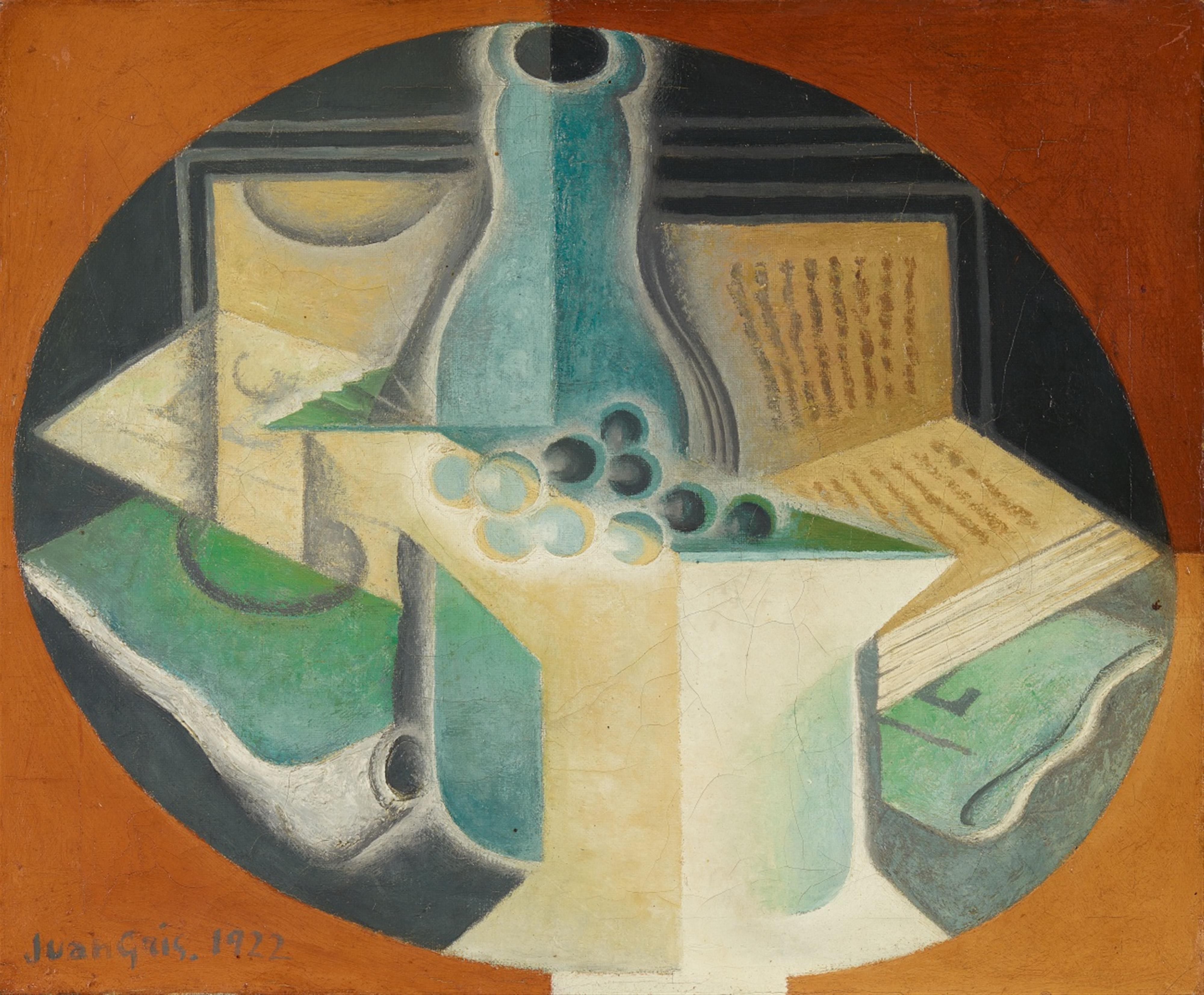Juan Gris
Raisins, carafe et livre
1922
Oil on canvas, relined 38 x 46 cm Framed. Signed and dated 'Juan Gris. 1922' in grey lower left. - Minor retouches along the upper edge of painting.
In the short, intense period of creativity granted to him, Juan Gris primarily concentrated on the still life in terms of motifs. At the same time, for him, Cubism was the only way for himself and like-minded artists to realise that sought-after visual essence of the objective world in the form of pictures. Thus, in a contribution to the “Europa-Almanach” of 1925, he writes: “And so, at the moment, I cannot even consider the possibility of expressing myself sometimes in the Cubist manner, sometimes in a different artistic manner, because for me Cubism is not a manner, but an aesthetic, even a spiritual state.” (cited in: Daniel-Henry Kahnweiler, Einführung, in: Juan Gris, exhib. cat., Wallraf-Richartz-Museum, Cologne 1965/66, no pag.). His oeuvre displays a rigour and cohesiveness that testify to an exceptional level of self-reflection and the greatest passion for his cause. At the same time, Gris pursued his own very distinctive path within Cubism:
“In contrast to his friends, he did not build on Cézanne. He inverted the methods of the master of Aix into their opposite by composing an abstract, architectonic pictorial order into which he inserted the objects. He did not create abstractions, instead, he made the abstract concrete: 'Cézanne made a cylinder out of a bottle. I make a bottle out of a cylinder.' In the still lifes he created according to this method, mathematics and poetry become united, as in music. […] The ideal form of the model is no longer identified through atomised decomposition in the course of brooding analysis, rather, it is composed by the painter based on his own idea; in contrast to Cézanne, this takes place not 'before the motif', but with the aid of memory. The sensual experience is no longer spiritualised, instead, a spiritual idea is made perceptible to the senses.” (Karl Ruhrberg, in: Kunst des 20. Jahrhunderts, vol. 1, Cologne 2005, p. 74).
In our still life from 1922, Gris has combined his vocabulary of motifs consisting of carafe, book, fruit bowl, newspaper and pipe into a cohesive, crystalline figure that he causes to emphatically stand out like a picture within a picture through the horizontal, ovoid frame surrounding it. Sharp-edged and gently curvilinear forms merge harmoniously; the colour scheme in white and gentle shades of green stands in tense contrast to the orange-brown of the framing oval.
Catalogue Raisonné
Cooper/Potter 405
Provenance
Galerie Kahnweiler, Paris, archive no. 7436 (fragmented label verso on stetcher); Galerie Simon, Paris (1923); Galerie Mettler, St. Gallen (no. 431); Madame Vandervelde, Schweiz; Sotheby's London, Auction 17 February 1932, Lot 136; Major Simmons, London; Christie's London, Auction 27 March 1973, Lot 24; Galerie Georges Moos, Geneva, no. 444 (frame label verso); Galerie Krugier, Geneva; Brook Street Gallery, London; Private collection, Czechia
Literature
L'Esprit Nouveau, no. 20, 1922, with illus.
Exhibitions
Paris 1923 (Galerie Simon), no. 46 (fragmented label verso on stretcher)

